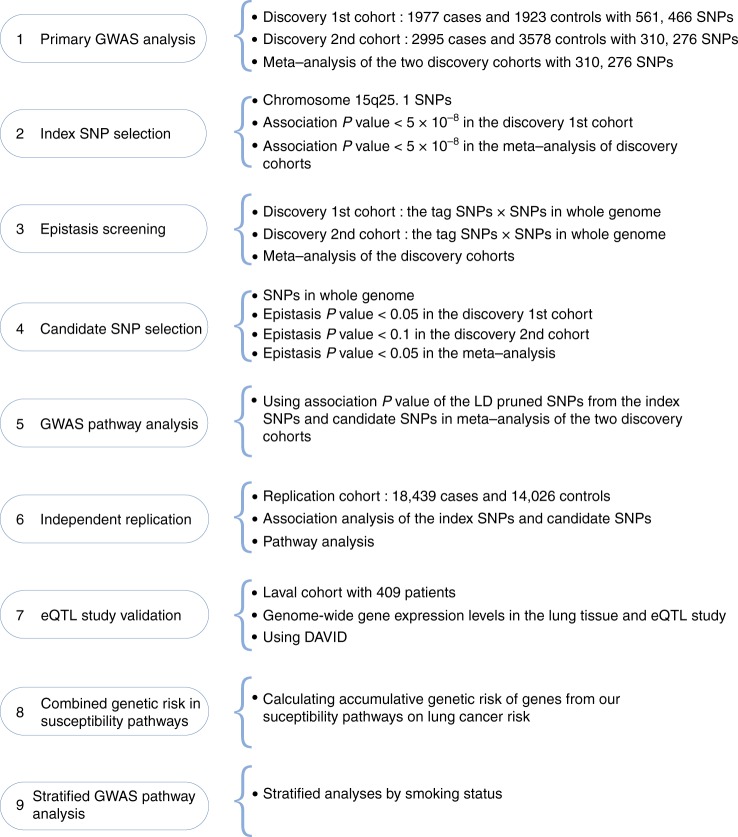Fig. 1.
Schematic overview of the study design. (1) In the discovery phase, a total of 310,276 SNPs were the same in both the 1st and 2nd discovery cohorts and were applied for association analyses and meta-analyses. (2) SNPs within the 15q25.1 locus, which were associated with lung cancer risk with logistic regression P values of less than 5 × 10−8 in the 1st discovery cohort and in the meta-analysis of the discovery cohorts, were selected as index SNPs. (3) The epistasis test between SNPs in the whole genome and the index SNPs within chromosome 15q25.1 locus were conducted for both discovery cohorts and a meta-analysis was performed to combine the epistasis results. (4) The SNPs, which interacted with the index SNPs with an epistasis P value of less than 0.05 in the 1st discovery cohort and in the meta-analysis of both discovery cohorts, and less than 0.10 in the 2nd discovery cohort, were selected as the candidate SNPs. (5) The index SNPs and the candidate SNPs with the logistic regression P values in the meta-analysis of discovery cohorts were applied for GWAS pathway analysis. (6) In the replication phase, the index SNPs and the candidate SNPs with the logistic regression P values in an independent cohort were applied for GWAS pathway analysis to validate the susceptibility pathway enriched in step 5. (7) The most significant genes in the whole genome regulated by SNPs in chromosome 15q25.1, which were selected with the eQTL study, were employed for pathway analysis. (8) The individual and combined effects of genes in the pathways on lung cancer risk were calculated. (9) A similar process to select index SNPs and candidate SNPs and to carry out GWAS pathway analyses in the subgroups of smokers and non-smokers were conducted

